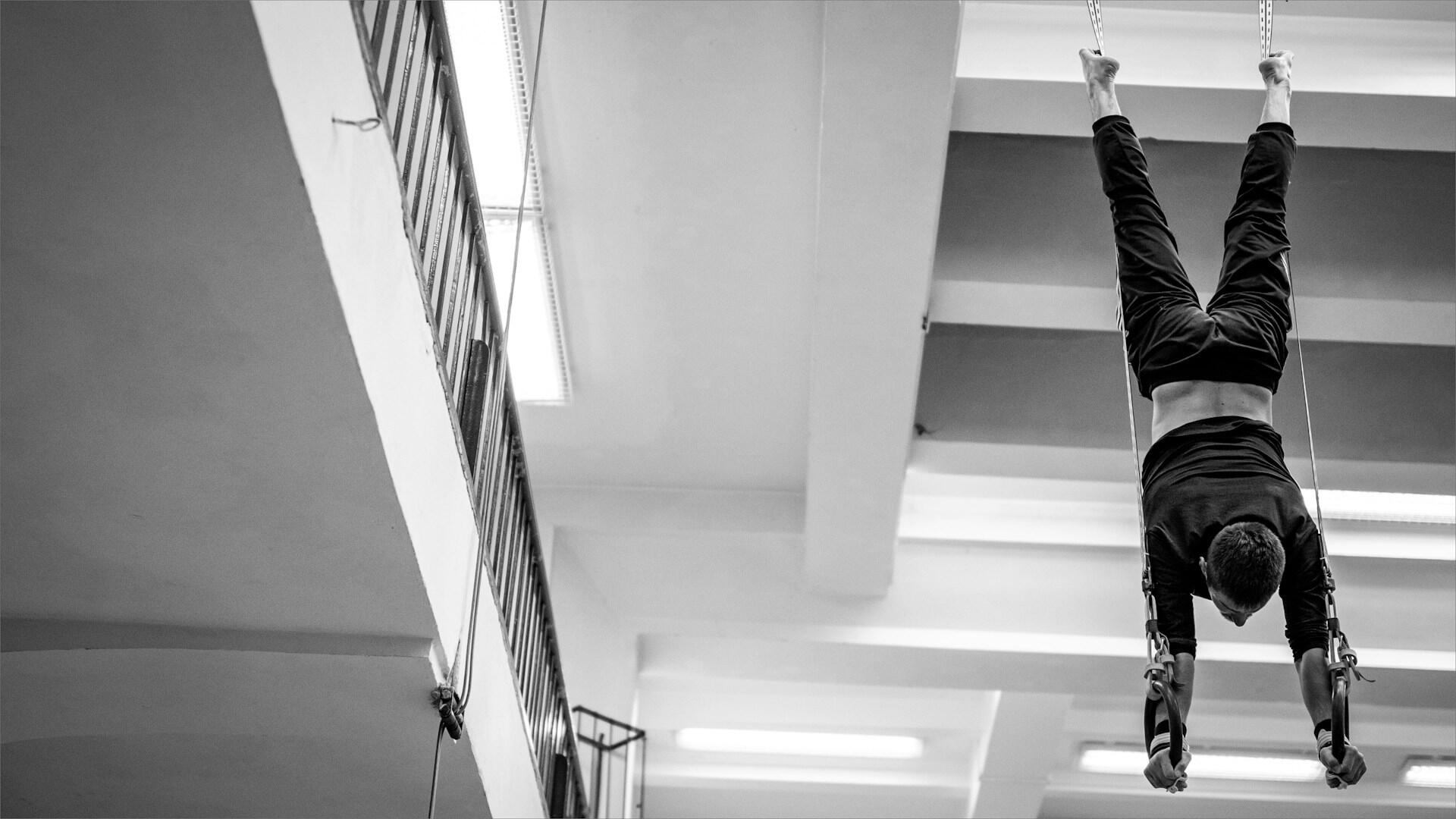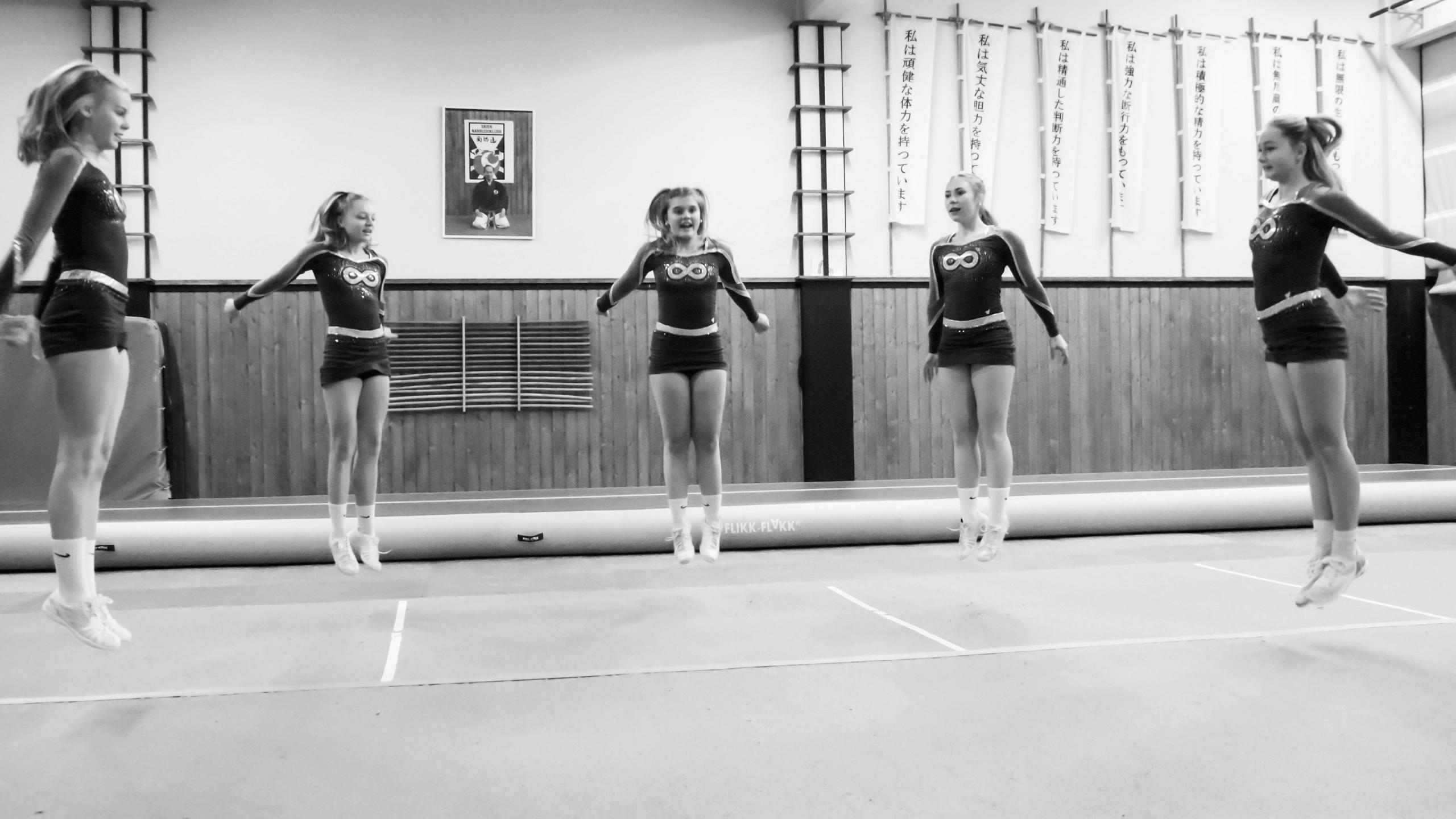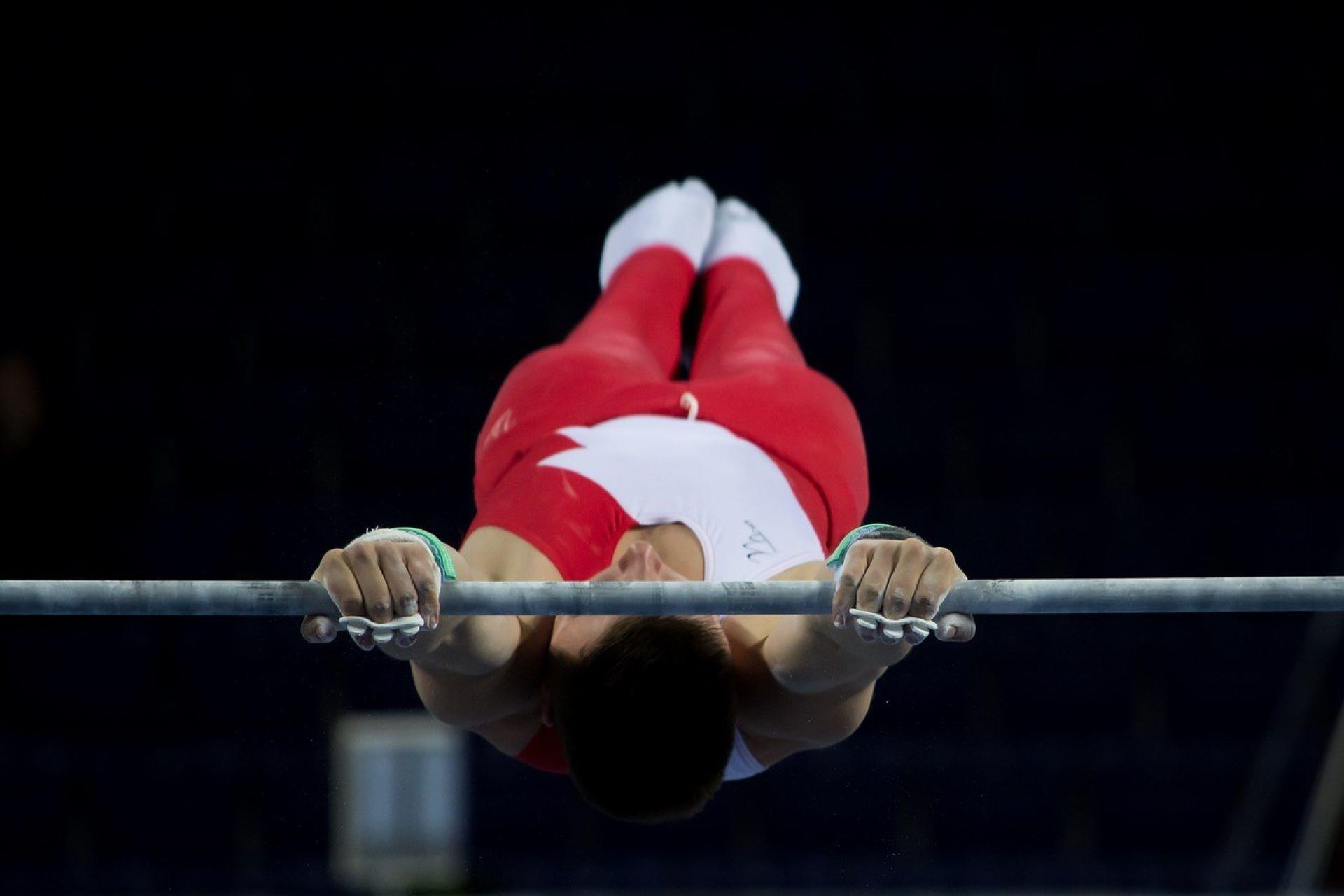With the Olympic Games just around the corner, many of us might be feeling a surge of excitement and a newfound interest in the world of gymnastics.
For those interested in gymnastics, the World Championships are held every year except for the Olympic years. However, the Olympic Games have a special place in gymnastics. They are a platform for the world's best gymnasts to showcase their skills and a symbol of the sport's global reach and popularity.
In this series of articles, we'll delve into the captivating world of women's gymnastics, explore the thrilling Olympic program, and guide you on your journey to start learning gymnastics with a dedicated private tutor or coach.

A Brief History of Women's Gymnastics
A gymnastics program has been present at the Summer Olympic Games since the first modern games in 1896.
The program initially included the horizontal bar, parallel bars, pommel horse, rings, and vault. However, at the next Olympic Games in 1900 in Paris, individual events were dropped in favor of the all-around (individual) event.
The men (there were only men at the time) competed in 16 different events, with Gustave Sandras of France winning the gold medal. French athletes also won the silver and bronze medals.
Between 1904 and 1932, the men's gymnastics program at the Olympic Games was quite regularly changed, with events being added and removed until the current program, which includes all-around (team), all-around (individual), floor exercise, horizontal bar, parallel bars, pommel horse, rings, and vault, was established.
Women first competed in gymnastics at the 1928 Amsterdam Games, but only in the all-around team event. This marked a significant milestone in the sport, paving the way for women's gymnastics to become a prominent part of the Olympic program. The Netherlands won the gold medal in these games.
This was dropped for the 1932 games before returning for the 1936 games. The gold medal in the 1936 Berlin Olympics was won by Germany.
When the Olympic Games finally returned after World War II, women still competed in the all-around (team) event. In 1952, this all changed with the program being established with the following events:
- All-around (team)
- All-around (individual)
- Balance beam
- Floor exercise
- Uneven bars
- Vault
The portable apparatus (team) event was also part of the 1952 and 1956 games' programs, but it was dropped for the 1960 games and has never returned.
The Soviet Union in Olympic Gymnastics
During the 1950s, the Soviet Union emerged as a dominant force in women's gymnastics. Their gymnasts showcased exceptional skills and techniques, setting new standards in the sport. This trend remained for decades, and to this day, the Soviet Union has topped the gymnastics medal table at the Olympics, leaving a lasting legacy in the sport.
With 72 gold medals, 67 silver medals, and 43 bronze medals, the USA is in second place but over 60 medals behind despite the Soviet Union not having existed since the 1990s.
Romanian Dominance
Nadia Comăneci, a legendary gymnast, was the first to score a perfect 10.0 at the 1976 Olympic Games in Montréal, Canada. Her flawless performance set a new standard in the sport, inspiring generations of gymnasts to strive for perfection.
Watch Nadia Comăneci discuss her Perfect 10 performance four decades later.
The USA Emerges as an Olympic Gymnastics Giant
Mary Lou Retton became the first American woman to win the all-around gold medal at the 1984 Olympic Games.
In Atlanta in 1996, the “Magnificent Seven” from the USA won the team gold.
Women's gymnastics, particularly in the US, has continued to grow and improve, and with stars like Simone Biles picking up medals wherever she goes, interest in the discipline has also increased.
However, it's important to note that gymnastics is a demanding sport that requires years of training, discipline, and dedication. Gymnasts undergo rigorous training schedules to prepare for competitions, focusing on strength, flexibility, and technique.
Women's Artistic Gymnastics Events
So, which events will the female gymnasts compete in at the 2024 Olympic Games in Paris, France?
As mentioned, the women's gymnastics program at the 2024 Olympic Games in Paris, France, will include two all-around events (for teams and individuals) and individual balance beam, floor exercise, uneven bars, and vault events. These events will showcase the gymnasts' incredible skills and athleticism, creating an exciting and inspiring competition.
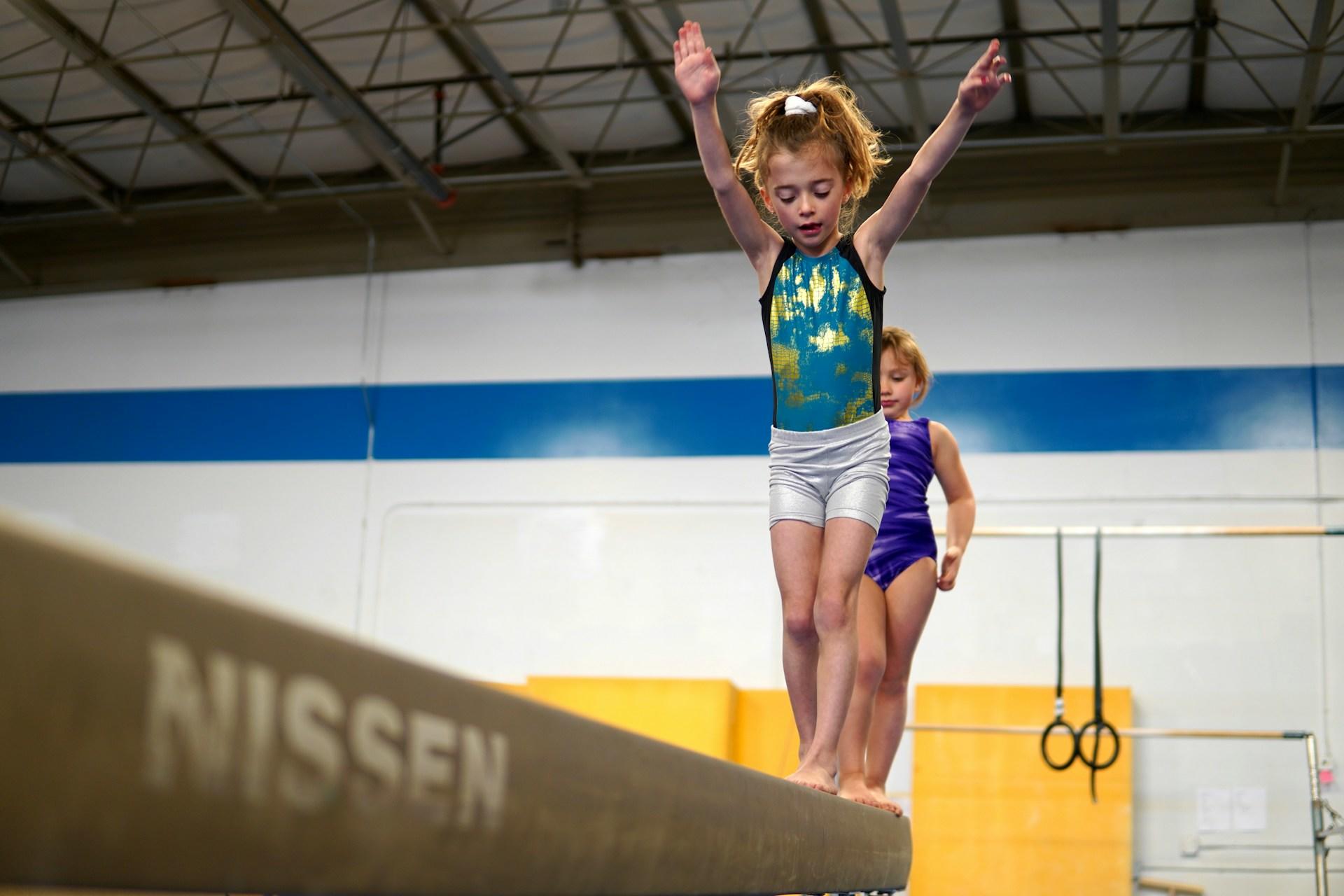
Since the all-around events include the following four apparatuses, we'll explain the individual events in the order in which they are performed during the Olympics.
Vault
The vault is the shortest and most explosive Olympic gymnastics event. Gymnasts run towards a springboard, leap onto a vaulting table, and perform aerial gymnastic skills before landing on a mat on the other side of the vaulting table. The skills performed on the vault can vary in difficulty, and executing these skills is a key factor in the gymnast's score.
This event initially used a vaulting horse, an apparatus resembling a pommel horse without handles. However, as gymnasts got faster and more technical, the vaulting table replaced the vaulting horse to reduce the risk of injury.
While the other three events (balance beam, floor exercise, and uneven bars) all include routines, the vault event starts with a predetermined difficulty score assigned by the International Gymnastics Federation's Code of Points.
The most difficult vaults include the Yurchenko double pike (6.40), round-off, half-on, front straight salto with double twist (6.00), and handspring double front salto tucked (6.00). When Simone Biles debuted the Yurchenko double pike in 2021 at the U.S. Classic, it was given a preliminary difficulty score (or D-score) of 6.6.

Uneven Bars
The uneven bars event is the women's equivalent to the parallel bars. In this event, there are two thin horizontal bars at different heights.
Gymnasts hold onto the bars using their hands and swing between the two bars, performing various skills, including swings, release moves, transitions, and handstands.
The scores for uneven bars skills are arranged into 8 different bands:
- A = 0.1
- B = 0.2
- C = 0.3
- D = 0.4
- E = 0.5
- F = 0.6
- G = 0.7
- H = 0.8
The top 8 skills from an uneven bars routine, which typically lasts between 45 and 90 seconds, contribute to the gymnast's starting score. The starting score includes the connection values (CV), 2.0 points for the 4 uneven bars requirements, and 10.0 for the execution score.
Judges apply deductions to the gymnast's execution score to give them the final score they're awarded at the end of the event.
Check out some of the most recent uneven bars winners at the Olympics.
Balance Beam
The balance beam event has gymnasts performing various skills on a narrow horizontal beam. This beam is just under four inches wide, so "balance" is essential here.
The beam is only four feet off the ground. Hence, it's not particularly dangerous in itself. However, given the gymnastic skills that competitors perform on it, falls can still be quite nasty.
It's common for gymnasts to train and learn how to use the balance beam using a version at a much lower height.
Like the other gymnastic events, competitors' scores are created from a difficulty score and execution score. In gymnastics, competitors technically start with a perfect score before deductions are applied. These deductions are based on the execution of the routine, including factors like form, technique, and precision.
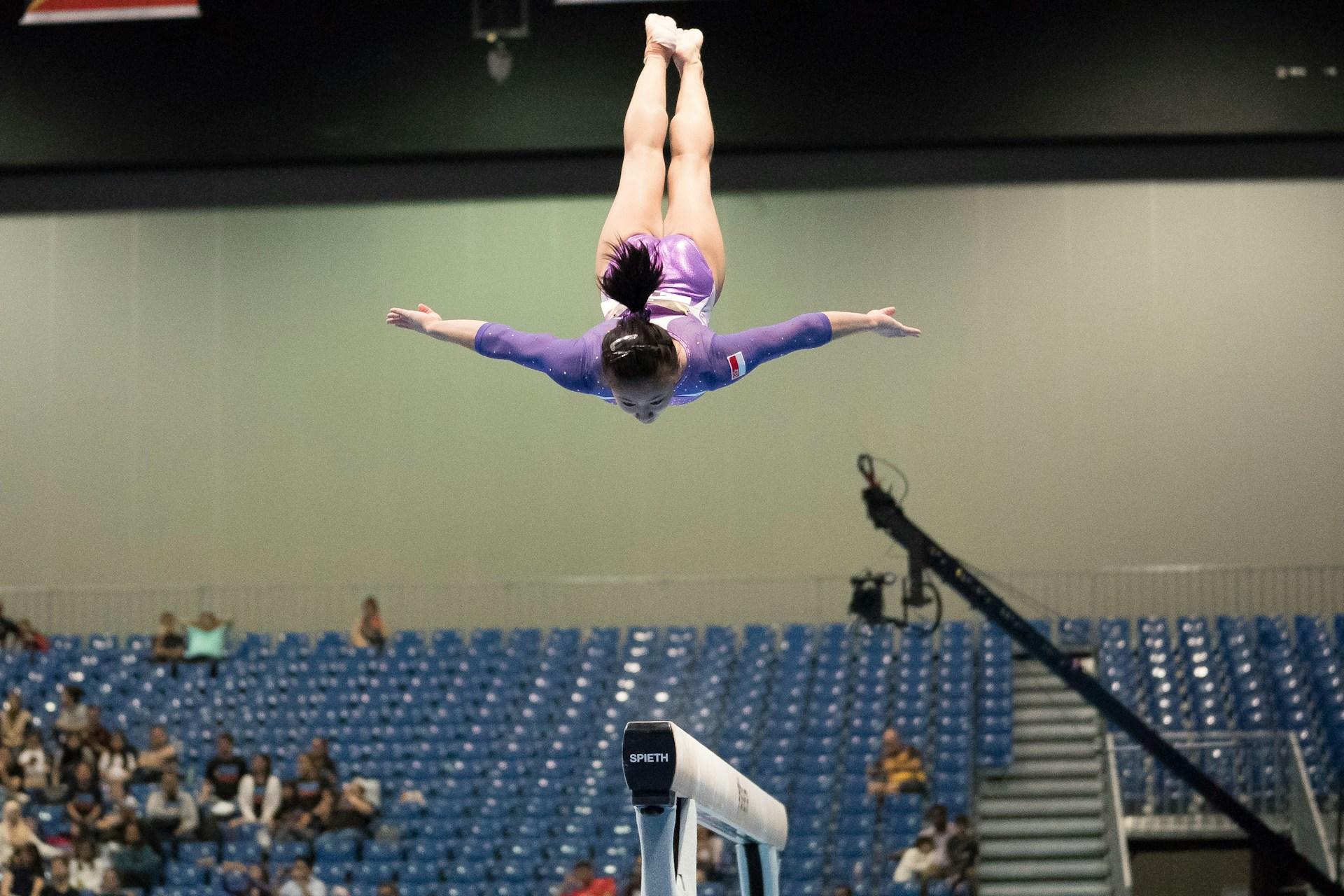
Floor
The floor is no exception, like the other events that take their names from the main apparatus used.
In the floor exercise, the floor isn't just any ordinary floor. Instead, it is made from rubber, plywood, and springs. This allows gymnasts to jump harder, land more softly, and perform incredible gymnastic skills.
The floor is square, with sides that are 39 feet long. Since this gives the space a diagonal of around 56 feet, gymnasts typically go from corner to corner to perform the most difficult skills.
A floor routine, which includes tumbling, dance, and acrobatics and has a time limit of 90 seconds, has requirements that the gymnasts meet. These account for 2.0 points of their starting score, much like with some of the other events.
The floor event is choreographed to music, and gymnasts meticulously plan and practice their routines before the floor event. Many prepare by using professional choreographers and experts.
For the floor routine, skills are also scored using the bands we mentioned before and two additional bands: I and J.
- A = 0.1
- B = 0.2
- C = 0.3
- D = 0.4
- E = 0.5
- F = 0.6
- G = 0.7
- H = 0.8
- I = 0.9
- J = 1.0
Since gymnasts only win by beating the competition, it's difficult to say precisely what score will win. Still, generally, scores for gymnastic events range between 12 and 15.
Scores over 15 are likely to win the gold medal, though there have been events with multiple gymnasts scoring over 15.
14s and above will usually be on the podium or competing for a medal.
12s are very unlikely to win a medal at the Olympic Games.
For an incredible example of a floor routine, watch Simon Biles' near-perfect performance at the 2016 Olympic Games.
Learn Gymnastics with Superprof
If you're interested in more than just watching gymnastics at the Olympic Games, consider learning how to do it.
While it helps to start young if you dream of winning Olympic gymnastics medals, anyone of any age can learn gymnastics with the right tutor or coach.
You can find private gymnastics coaches and tutors on the Superprof website simply by searching for them. You can then browse their profiles, see what coaching they offer and how much they charge, and contact them.
Many coaches and tutors on the platform offer the first session for free, so why not try a few before finding the one that's right for you and what you want to learn?
















